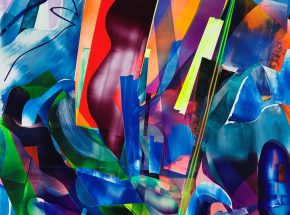

One of the preeminent artists of his generation, Mark Rothko is closely identified with the 1940’s, New York School. Rothko’s work is characterized by rigorous attention to formal elements such as color, shape, balance, depth, composition, and scale.1 His later works frequently consist of floating rectangles of luminous color on enormous canvases that manage to simultaneously convey a deep sensuality and a profound spirituality.
Mark Rothko was born in Dvinsk, Russia. In 1913, he left Russia and settled with the rest of his family in Portland, Oregon. Rothko attended Yale University, New Haven, from 1921 to 1923. That year, he left Yale without receiving a degree and moved to New York. In 1925, he studied under Max Weber at the Art Students League. During the early 1930s, Rothko became a close friend of Milton Avery and Adolph Gottlieb. In the early 1940s, he worked closely with Gottlieb, developing a painting style with mythological content, simple flat shapes, and imagery inspired by primitive art.
The late 1940s and early 1950s saw the emergence of Rothko’s mature style, in which frontal, luminous rectangles seem to hover on the canvas surface. The Museum of Modern Art, New York, gave Rothko an important solo exhibition in 1961. In 1964 he accepted a mural commission for an interdenominational chapel in Houston, Texas. Rothko took his own life February 25, 1970, in his New York studio. A year later, the Rothko Chapel in Houston was dedicated.
(1) www.nga.gov
(2) The Columbia Electronic Encyclopedia, 6th ed. Copyright © 2006, Columbia University Press.
(3) www.guggenheimcollection.org






